Last updated on Oct 14, 2025
12 Character Archetypes Every Writer Must Know
Martin Cavannagh
Head of Content at Reedsy, Martin has spent over eight years helping writers turn their ambitions into reality. As a voice in the indie publishing space, he has written for a number of outlets and spoken at conferences, including the 2024 Writers Summit at the London Book Fair.
View profile →'Character archetypes’ are something you imagine bohemian writers talking about at length — perhaps while smoking a cigarette and stroking their pointy beards. And when they move onto the topic of Jungian theory, you can see yourself tuning out of the conversation altogether. But despite their seemingly high-minded background in psychoanalysis, understanding character archetypes can help writers of all stripes gain a better understanding of storytelling.
In this post, we’ll explain to you what character archetypes are, reveal some of the most popular ones — and show you how to prevent your archetype characters from becoming clichés.
What is a character archetype?
A character archetype is a type of character that recurs across time, stories, and cultures. They represent a specific set of universal, recognizable behaviors that make them quickly relatable to and familiar with readers, even if the story itself is different.
Carl Jung, one of the forefathers of psychoanalysis, suggested that they are part of the human collective unconscious. He believed that these recurring figures are part of the myth-making fabric that is common to all humans.
Q: How can writers use stereotypes and tropes to their benefit when creating a character?
Suggested answer
Well, stereotypes and tropes exist because they are the comfort food of readers, and should be the comfort food of writers too. Not to the extent that you write cliche stories by overusing the same old thing. But by the fact that their presence in certain story types is expected and even desired by fans of that story type, so to try and write without them can leave readers unsatisfied and the story feeling incomplete.
There are great books out there on this, John Truby in particular has a great one out. Knowing the stereotypes of a heroes journey, for example, gives you lots of options for side characters and supporting characters to help a hero on certain types of quests. The tropes are the expected encounters and obstacles that hero will encounter along the way.
If you start by mapping these out and identifying which are required (tropes most of all) and which work best for your story but are optional (stereotype characters) then you can take them and twist them in unique and interesting ways, even flip them around in timeline or approach in ways that make it clear they are there (and meet reader expectations and preferences) while still avoiding cliche expectation and creating interesting and unique characters, world, and stories that captivate readers.
Bryan thomas is available to hire on Reedsy ⏺
Trope = yes
Stereotype = no
A stereotype is an oversimplified view of a type of person, based on one aspect of their identity, like race or gender or hair color or where they're from. It's important to know stereotypes so you can avoid them in your writing, both so you won't be generic and so
Tropes, on the other hand, are like adding sugar to cake, rather than salt: You want to know what your audience came for, so you can give it to them!
Tropes are things with universal appeal that audiences come back for time and time again. (Not to be confused with a cliche, which is just something that has been overused until it's cringey. For instance, the villain in a YA novel being a mean blonde cheerleader is both a cliche and a stereotype. But a trope might be that the main character is an underdog who manages to win the heart of the most high-status boy in school!) Examples: enemies to lovers, amateur detective, chosen one, only one bed...
Intelligent use of proven tropes, combined in a new and unique way, are the fastest way to genre writing success!
Michelle is available to hire on Reedsy ⏺
A trope is something that is instantly familiar to readers: a character type, setting, plot point, or style of writing that is recognizable and tied to a specific genre.
For example, one familiar romance story structure is the “enemies to lovers” plot. This pattern is immediately recognizable to readers, and although it is used often, writers are still finding new and unique ways to spin it, and readers still love engaging with it.
Another popular trope is that of “The Chosen One.” Think about it: Both Luke Skywalker and King Arthur find a magical sword, receive the guidance of an older, wiser mentor, and go on a journey to storm a stronghold to save a princess. Even though the building blocks are the same, the stories are vastly and entirely different…and centuries apart!
There are hundreds of ways to apply this trope and come out with a unique and fresh story.
Tropes are the conventions, ideas, or motifs that make up these basic building blocks of all storytelling. In order to tell a fantastic story, tropes are necessary (and not to be confused with clichés, which are devices, expressions, or phrases that have been used so often and in so many places that readers have become tired of them, and desensitized to them). But why are they necessary?
Well, tropes are baked into every genre that we know and love. If you’re writing a western novel, odds are you might have a lone cowboy or a bumbling sheriff in there. If you’re writing a thriller or mystery novel, you might find yourself creating a gritty, lone-wolf detective, who acts first and asks questions later. Just because these tropes have been used before, doesn’t mean they’re tired!
If you’re writing in a specific genre, in order to use tropes effectively, you should be intimately familiar with the tropes of that genre. Knowing them inside and out means you’ll have your best shot at subverting them and spinning them in new ways that readers will enjoy (and avoid veering into cliché territory).
Think of books in the genre that you’ve read before. Was there one that you didn’t like? Ask yourself: What specifically made you dislike it? It might be that a trope wasn't used effectively, and if you can identify exactly what disappointed you about the way that trope was used, it can help you discover what you wished that writer might have done differently. And then: poof! Suddenly you have a thread of inspiration you can pull on to get some ideas for your own story.
Remember: tropes are patterns. And patterns can be twisted, bent, and manipulated. Just be careful not to break the pattern, or you risk readers finding it difficult to relate to a trope they cannot recognize and therefore relate to.
Writers just like you are still finding fresh ways to put a spin on tropes of all kinds, and using those building blocks to build entirely new and unexpected things for us to read!
Lesley-anne is available to hire on Reedsy ⏺
When it comes to building characters, tropes and stereotypes get trashed. Authors shy away from them, not wanting their stories to sound stale because they're leaning on well-worn tropes. But applied sparingly, these storytelling crutches can enrich your characters, allow readers to jump in easily, and even lay the foundation for surprise and depth.
Tropes are a short-cut for your readers. They give readers a feeling of who a character is and where they stand in the story. A "mentor," for instance, gives a feeling of guidance, a "reluctant hero" gives a feeling of inner conflict, and a "grizzled detective" gives a sense of experience and exhaustion. These archetypes shave space out of your storytelling so readers can catch on to relationships and dynamics immediately. The art is to combine them with unique characteristics that make your character stand out.
Stereotypes are worse. They can establish context rapidly, but they can also be lazy or toxic if they are not challenged. The trick is to use them as a springboard, and not an endpoint. A character who holds the "shy bookworm" description might secretly be a social master manipulator. That interplay between expectation and reality keeps things interesting and provides depth.
Another great way to use tropes is to subvert expectations. Use a "princess in distress" who saves herself or a "charming rogue" who has imposter syndrome. By turning the expected tropes on their head, you catch the reader off guard without losing respect for those conventions.
Ultimately, the most compelling characters are born from layers beyond the trope. Surface traits like charm, wit, or wisdom draw people in, but motivation, flaw, and contradiction create a character. Tropes will also support your themes—whatever they may be, from redemption to generational insight to ambition's cost—adding cohesiveness to your narrative but still permitting complexity.
The issue happens when writers rely on tropes or stereotypes without questioning them. Does every single one serve the story, add depth, and make your character more human? Used consciously, tropes and stereotypes are not clichés—they are tools used to make your characters immediately recognizable, resonant at a thematic level, and unforgettable.
John is available to hire on Reedsy ⏺
While it's worth noting the use of tropes and stereotypes can be comforting -- I love an enemies-to-lovers, "Who did this to you?" trope in romance, and the Chosen One in young adult makes me nostalgic for the golden age of dystopian; however, you can also use stereotypes and tropes by subverting them.
A great example is Victoria Aveyard's RED QUEEN. I won't reveal the twist, but it took a certain romantic stereotype, crushed it to pieces, and surprised readers in a way that still gives me (delightful) trauma! Another more general example is the Game of Thrones series and the way that George RR Martin kills characters off left and right. Those you thought were heroes or "chosen" are not guaranteed to be around long enough to fulfill any destiny.
So by all means, embrace tropes and stereotypes to give readers what they want; however, think about surprising them a little bit. See how you can tell a different story.
Grace is available to hire on Reedsy ⏺
There is a common misconception within writing circles that "trope" = bad or cliche. While yes, certain tropes and character traits can become overused and cliche, tropes are more like reader expectations when they pick up a book from a certain genre. For instance:
- In romance, tropes are things like friends to lovers, enemies-to-lovers, he falls first, grumpy neighbor
- In YA fantasy, tropes can be things like the Chosen One, Love Triangles, or Hidden Magic
- In middle grade, tropes can be the power of friendship, magical animals, magical academies
While not all books in these genres include all of these things, and while these things can certainly be cliche if you don't put your unique take on it, they are what readers enjoy about a genre. After all, isn't that why you read a certain genre, because there are tropes and elements within that you enjoy?
The way to use these stereotypes and tropes to your benefit is to use them as a framework, understanding how they operate and why readers enjoy them. Then, sprinkle your unique author magic on them. How you describe characters, the dynamic between two characters, how certain elements show up or are utilized, all these can be unique to you and your book. You're not looking to reinvent the wheel, but rather give it a new coat of paint, your coat of paint, so that you write the story you want while delivering a satisfying reader experience.
Sean is available to hire on Reedsy ⏺
If we are to believe Jung, as well as Joseph Campbell’s theory of the Hero’s Journey — also known as the monomyth — stories and myths are an intrinsic part of human development and evolution. They are a teaching tool, a way to warn each other of dangers and the simplest method of examining human behavior and better understanding one another.
We’re not saying that these archetypes are embedded into human DNA: they are simply the character forms that have resonated most over the generations.
If myths and fireside stories were originally ways that people had to impart knowledge to society at large, then each of Jung’s archetypes might represent a different lesson: care for your children like a mother, be brave like a hero, be wary of tricksters posing as friends, and listen to your elders.
Like the terms used in Campbell’s The Hero of a Thousand Faces, Jung’s archetypes sound somewhat biblical (animus, wise old man, devil, et al), making it harder to apply them to contemporary stories. Later in this article, we’ll feature some of our favorite archetypes, giving them names more suitable for a wider range of storytelling.
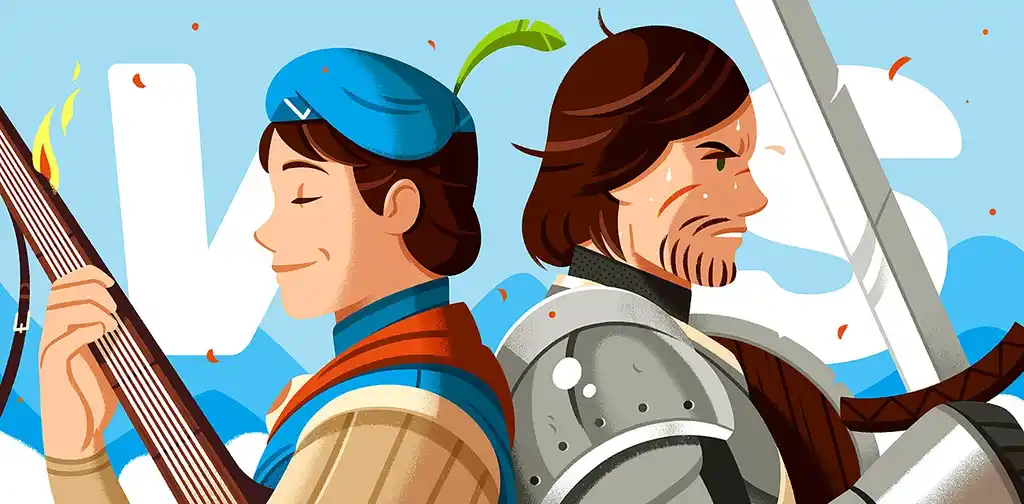
FREE COURSE
How to Develop Characters
In 10 days, learn to develop complex characters readers will love.
Are archetypes the same as cliché or stock characters?
Not necessarily. Archetypal characters and stories will boil down the human experience to a relatively small number of patterns, which is perfectly fine. Human beings aren’t that unique when you think about it: we are all governed by a finite set of wants and fears.
Archetypes only become stock characters when the specifics get repetitive and predictable. A muscle-bound, sword-wielding warrior out to avenge his slain family might be interesting until you’ve seen a dozen Conan the Barbarian rip-offs. Some of the most compelling and enduring stories will adhere to archetypes while introducing enough of a twist to make a character seem fresh. Neo in The Matrix would be just another ‘chosen one’ cliche were he not a hacker who discovers that he’s been plugged into a virtual world his entire life.
Q: What are the most overused character clichés writers should avoid?
Suggested answer
Green eyes. And eyes that glow, that swirl, that change color, have flecks that dance, and can be seen from absurd distances. Fantasy books are full of this stuff. It gets tiresome. And while we're at it, does every feisty female have to have red hair?
Doreen is available to hire on Reedsy ⏺
If you'd like to make sure that your character isn't just a stock character, we recommend downloading and filling out handy tools, such as character sheets. In a later section of this post, we’ll also look at ways to subvert archetypes while also staying true to them.
🖊️
Which famous author do you write like?
Find out which literary luminary is your stylistic soulmate. Takes one minute!
12 Common Character Archetypes
Every character archetype has a unique set of strengths, flaws, and desires which drive their stories. Some of these archetypes are seemingly gender-specific, which is perhaps a result of gender roles that span back millennia.
Here are 12 common character archetypes in fiction:
1. The Warrior
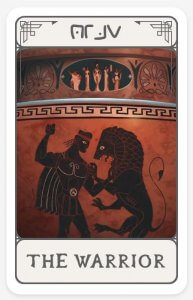
It’s the man with a plan. Armed with a particular set of skills and the sheer force of their will, the hero will conquer the enemy and carry the day. This incredibly competent character will usually suffer a crisis of confidence at their lowest ebb — which they must overcome if they are to rise once more.
Strengths: Courage, strength (physical or mental), and ability.
Weaknesses: Overconfidence, ego.
Desires: To save the day and prove their worth.
Examples: Hercules, Odysseus, Aragorn from Lord of the Rings, and any Tom Cruise character.
2. The Child
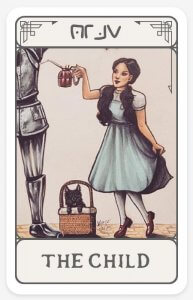
Innocence is lost and children grow up: that’s entropy, and the only way this story goes. This archetype usually follows a young or naive character who sees the world through rose-tinted glasses — until reality comes knocking. That’s not to say that they end the story as jaded husks of their former selves — but they will learn a lesson or two about the world around them.
Strengths: Optimism, enthusiasm, imagination.
Weaknesses: Naivete, physical powerlessness.
Desires: To be happy (or happier).
Examples: Scout from To Kill a Mockingbird, Dorothy from The Wizard of Oz.
Q: Does a protagonist have to change over the course of their story?
Suggested answer
Great question! And as with so many answers when it comes to writing fiction, the answer is 'yes and no'. Let me elaborate...
Sometimes, a change in a character and how it happens is the entire point of a story. Look at 'A Christmas Carol' by Charles Dickens, for example: Scrooge must look into his past and understand how his life has brought him to this point. For him, if he doesn't change, he will die a lonely and unmourned death. For us, if he doesn't change, then all we really have is a book about a man shouting at Christmas.
And then sometimes there is a Katniss Everdeen. Her qualities of bravery and knowing what's right are there from the start - she wouldn't substitute for her sister otherwise. Those characteristics remain strong throughout. The change in the Hunger Games books are often about the changes Katniss brings to the world around her; her main job in the narrative is as an agent of change, as someone who is unafraid to stand up for what's right. We often see this in superheroes.
I'm also thinking about Harry Potter, who doesn't so much change as have knowledge revealed to him that changes the way he sees himself. Yes, he gains skills and knowledge as the books progress, but he is (literally) marked to be who he is from the beginning. The change here is in his understanding of who and what he is, and what happened to him and his parents - something that the reader discovers along with him.
So I'd say that there always has to be change - otherwise, why would we read a book at all?
And change will definitely occur around the protagonist.
But that doesn't necessarily mean that the character begins as 'a', goes through 'b' and becomes 'c'. This is what makes fiction so interesting, to read and to write.
Stephanie is available to hire on Reedsy ⏺
No. But in most cases, it's probably a good idea.
This criticism ("protagonist needs development/arc/change") is often shorthand for "this story doesn't have much craft to it" or "there's no arc to this thing." If the protagonist has no arc, good chance the story doesn't, either—but this isn't a hard-and-fast judgment.
The better question to ask is whether your protagonist should change. If not, you should have a firm idea why not, and so should your reader by the end. What would the character's not changing say, mean, or do? Is it a tale where everyone knows the protagonist needs to change, but he doesn't? Does he suffer the consequences? Get away with it? And so on.
Unless you can articulate why your character shouldn't change, then your editor is probably right: change would help the story along. But before you get rewriting, decide how this change will advance the story, what effects it will have.
In other words: Don't just change a character arc because an editor said you should. Change it because the story will be stronger for it.
Joey is available to hire on Reedsy ⏺
This is what is usually expected, especially in coming-of-age stories for teens. However, in some cases, the point of the story might be that the main character does NOT change. And if this scenario works best for the story you are trying to tell, then the protagonist does not have to change.
While growth in the protagonist by the end of the story is the "norm" for most books, sometimes the growth comes from getting what they wanted at the beginning. There are many ways for "growth" to occur. Whichever path is chosen must make sense for your story and feel organic to the narrative, not forced.
Example of a "stuck" adult character that doesn't change:
Archie Bunker from the TV show All in the Family - always a cynic and pessimist
Example of an adult character who is "stuck" at the outset, but grows by the end of the story:
Macon Leary from The Accidental Tourist - becomes "unstuck" and more independent
So, you have to do what works for your story and makes sense in the overall plot scheme.
Melody is available to hire on Reedsy ⏺
As they say, "change is the only evidence of life." So as a rough, general rule, it's a good idea to have character development.
As well as being an editor, I'm a screenwriter, and protagonist change is often stressed as essential in films to keep an audience interested.
But it depends on the type of story and character. If a character is interesting enough, and the point of the story includes that they don't change, then don't force them to.
There are no infallible rules about storytelling.
John is available to hire on Reedsy ⏺
3. The Orphan
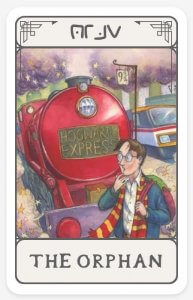
The dream of being plucked from obscurity and elevated to prominence is a fantasy nearly everybody’s had at some point in their lives. That’s one of the reasons why Orphans are in such high demand as protagonists: they’ve got the most to gain from good fortune. They don’t need to be literal orphans, but in most cases, these characters are in search of a new “family.”
Strengths: Survival instinct, empathy, perseverance.
Weaknesses: Lack of confidence, willingness to please others.
Desires: To thrive and connect with others.
Examples: Harry Potter, Oliver Twist, Quasimodo in The Hunchback of Notre Dame.
4. The Creator
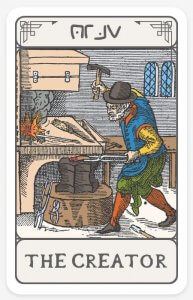
For this kind of character, nothing is more important than the need to make something. In many stories, a creator will be an artist of some sort — willing to sacrifice their own well-being and relationships in the pursuit of this greater abstract goal. Because of their single-minded vision, creators often pay the greatest personal price.
Strengths: Creativity, drive, the ability to execute their vision.
Weaknesses: Personal sacrifice, perfectionism, egotism.
Desires: To create something of value to cement their legacy.
Examples: Remy from Ratatouille, Alexander Hamilton from Hamilton, Dr Jekyll from Dr Jekyll and Mr Hyde, Willy Wonka.
5. The Caregiver
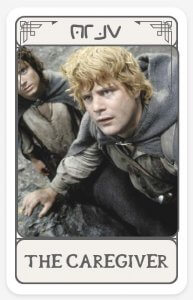
Selflessness is the defining attribute of this character type. They might be a mother, father, wife, husband, or best friend — whoever they are, they’ll do anything to protect their child, ward, lover, or best bud. It’s quite rare for the caregiver to take center stage but such is the nature of one so selfless.
Strengths: Generosity, selflessness.
Weaknesses: Also selflessness: they are open to exploitation.
Desires: To protect and help others.
Examples: Eva in We Need to Talk About Kevin, Samwise from The Lord of the Rings, Mary Poppins.
🎵
Tell us about your book, and we'll give you a writing playlist
It'll only take a minute!
6. The Mentor/Sage
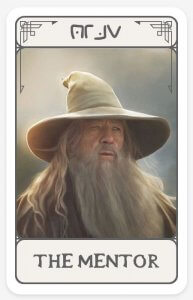
Our protagonist might encounter some sort of mentor character, who will prepare them for the trials ahead. Sometimes this mentor is a parent. Other times, it might be a wizard or a suburban Karate teacher. Whatever form they take, they are there to guide our hero through the unknown.
The original purpose of this archetype was probably to convince younger generations of people to listen to their older, frailer tribe-mates.
Strengths: Wisdom, experience.
Weaknesses: Caution, inability to act.
Desires: To help the hero push past their boundaries and make sense of the world.
Examples: Magwitch in Great Expectations, Mr. Miyagi in The Karate Kid, Obi-Wan Kenobi in Star Wars.
7. The Joker
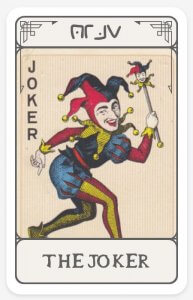
The fool, the clown, the jester, the hedonist, the laid-back stoner. This archetype has many faces, but if you see any character say something like, “Relax, dude” or, “Chill out,” then they’re probably the Joker in the pack. In myth, Jokers often act as a cautionary tale, warning people not to waste too much time in pursuit of pleasure. In modern culture, they’re often the comic relief.
Strengths: Joyousness, likeability.
Weaknesses: Frivolousness.
Desires: To live for today and be happy.
Examples: Timon and Pumbaa from The Lion King, Tigger from Winnie the Pooh, Stifler from American Pie.
Q: What is the most crucial piece of backstory an author should understand about their protagonist before beginning a novel?
Suggested answer
Whether in the backstory or in the current action of the book, once the reader starts reading, the author should know what their character wants. It can be a long-held desire or something new, based on changed circumstances.
There has to be a motivation and drive in the character. Or if there isn't any, and that is sort of the point of the book, you want to let the reader know why and what in their past has made them the way they are. This sort of "motivation" is a good thing to search for in each character. What has shaped them to do what they do and behave the way they behave in the story? They must stay "in character" throughout the book unless some sort of inner or outer impetus has forced them or inspired them to change their ways.
So this most crucial piece of backstory might be why your protagonist behaves the way they do, what motivates them and why, and what they want.
Melody is available to hire on Reedsy ⏺
8. The Magician
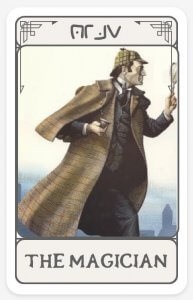
The aspiring masters of the universe. Driven by their inquisitive nature, Magicians seek enlightenment — but unlike the sages and mentors, they also want to impose their will on the world around them. These classic fantasy characters can easily impress others: even if they are not literal wizards, their abilities are beyond the comprehension of mere mortals.
Strengths: Knowledge, power.
Weaknesses: Hubris.
Desires: To create order from chaos and bend the world to their will.
Examples: Sherlock Holmes, Dr Strange, Jay Gatsby from The Great Gatsby.
9. The Ruler
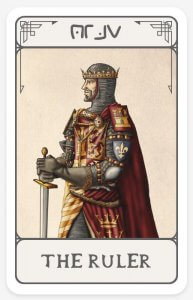
Heavy hangs the head that wears the crown. Any society needs a leader, but how does that leader cope with absolute power? What will they do to maintain control and order? Do they rule with kindness and compassion or with an iron fist?
Strengths: Leadership, charisma, power.
Weaknesses: Inability to delegate, suspicion.
Desires: Control, to hold on to power.
Examples: Macbeth, Miranda Priestly from The Devil Wears Prada, Mr Burns from The Simpsons.
10. The Rebel
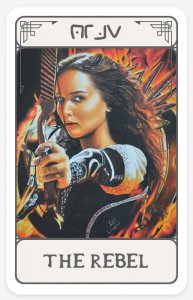
A rebel is mad as hell and they’re not going to take it anymore. In the face of an unjust society, they are the ones with the will to overthrow the status quo. A rebel might be a charismatic leader, but they also might work in secret. They can be a freedom fighter, or rock musician, or the girl in chemistry class with the purple highlights in her hair.
Strengths: Resourcefulness, perseverance.
Weaknesses: Small in power, status, and resources.
Desires: To change the world around them.
Examples: Katniss Everdeen from The Hunger Games, Ferris Bueller, Hester Prynne in The Scarlet Letter.
Q: What are effective adjectives for describing characters, and when should each be used?
Suggested answer
My favourite from my writing has been "etiolated." It's a word that describes a seedling starved of sunlight - thin and pale and reaching up. It contains a lot of layers of imagery which were useful for describing a character at their lowest point.
Mairi is available to hire on Reedsy ⏺
Curious, rebellious. A character that doesn't quite "fit the mold" will usually be interesting to readers.
Melody is available to hire on Reedsy ⏺
Characters are best described through body language and dialogue. Avoid overusing adjectives and let your readers do some of the interpreting. There is no need to spell everything out for them. The best way to convey a character's personality is through action, dialogue and body language.
Eva maria is available to hire on Reedsy ⏺
11. The Lover
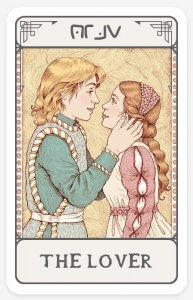
Just like Meatloaf, this archetype will do anything for love. They might be a prince, a pauper, a pop star or Sandra from HR — whoever they are, they have love in their lives and it makes them more driven and devoted than you can imagine. The downside of this passion is that they’re often willing to sacrifice everything for the ones they love — which can be a one-way ticket to tragedy.
Strengths: Devotion, passion.
Weaknesses: Willingness to sacrifice identity, life, and liberty.
Desires: Being in a relationship.
Examples: Edward from Twilight, Romeo and Juliet.
12. The Seductress
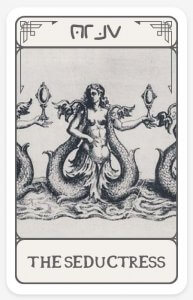
“I’ll give you whatever you want,” is the refrain of the seductress — a character that comes in all shapes, sizes, and genders. They might offer power, sex, love, money, or influence but remember, these things always come with strings attached. If a seductress is involved, the moral of the tale is almost always, “Don’t believe anything that’s too good to be true.”
Strengths: Allure, charisma, lack of morals.
Weaknesses: The emptiness of their promises.
Desires: Control.
Examples: Mephistopheles in Faust, Delilah from Samson and Delilah, 90% of the female characters in The Odyssey.
Subverting archetypal expectations
In Christopher Brooker’s The Seven Basic Plots, the author casts his Jungian eye on the nature of storytelling and mythmaking. The basic gist is that there really aren’t that many unique stories to tell: most plots center on some form of ‘quest and return’ where the protagonist seeks something and returns ‘home’ with it.
Following on from that, it stands to reason that there are also limited character arcs a story can follow. With that in mind, how can an author make an archetype fresh?
The answer, most likely, lies in the specifics.
As the writer and humorist John Hodgman will often say, “Specificity is the soul of narrative.” Stories resonate when they are universal (enter: archetypes), but they engage people by avoiding vagueness like a virus.
Q: What tools or techniques can authors use to develop detailed and effective character profiles?
Suggested answer
Writers can establish good character profiles by examining surface information and interior depth. Beyond physical description, notice personality, values, and contradictions—what the character wants vs. what the character fears. Techniques like freewriting as a character or writing the character's background can elicit subtleties that don't find their way into the main action but still affect behavior. Some authors use Q&A-type questions to explore motivations, habits, and relationships, and other authors create images of the character's past to observe how it affects present decisions. What is most important is consistency: when you know how your character thinks and behaves, their actions make sense, and readers feel that they are interacting with real people and not with plot devices.
John is available to hire on Reedsy ⏺
This is so important because the character will drive your story.. You reader has to be fascinated by your protagonist and be routing for him or her. I always interview my characters in depth. I don't just ask them about the basics of their lives and history. I ask them what they fear most in life, what makes them get up in the morning.
Joie is available to hire on Reedsy ⏺
I provide all my clients with a template that I devised myself for ensuring that every single character in a novel is fully fleshed-out, colourful and contrasting, both within themselves and to other characters.
Vanessa is available to hire on Reedsy ⏺
I've had success doing Enneagram quizzes in each character's persona. Even if you don't believe in personality profiles, it's a good way to check whether a character's goals, motivations, and considerations are consistent. They can reveal gaps where you still have a question to answer about a character's background and, best of all, it reassures you that you're writing characters who contrast with one another, rather than representing different aspects of your temperament as the writer.
Mairi is available to hire on Reedsy ⏺
The most important issue for each character is what they want. Desire and wants fuel the story, especially regarding what the main character wants. When two characters want the same thing, this is when tension can arise organically.
Melody is available to hire on Reedsy ⏺
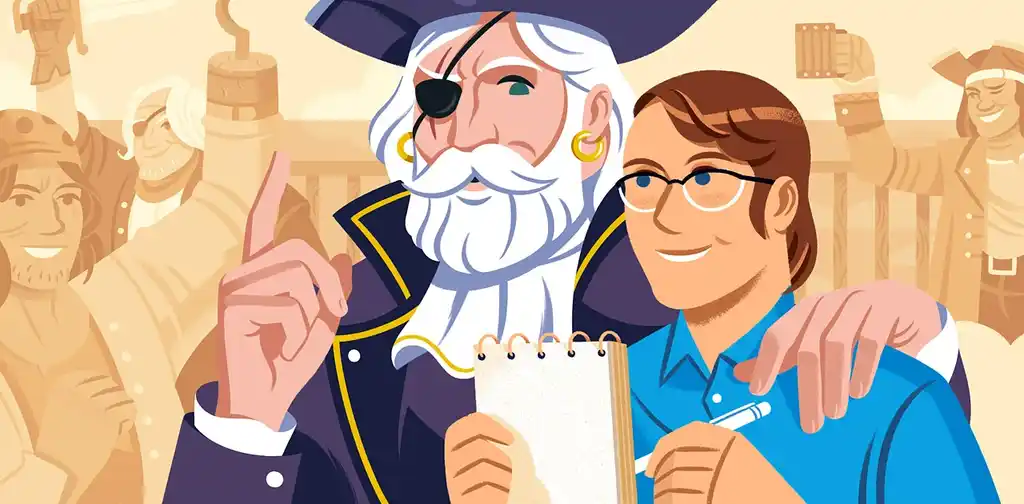
FREE RESOURCE
Reedsy’s Character Questionnaire
40 questions to help you develop memorable characters.
The plot of Stephanie Meyer’s Twilight is nearly identical to Romeo and Juliet. Edward and Bella belong to the same archetype as those star-crossed lovers of Verona. However, despite the vast similarities in the sequence of events of these stories, the important differences lie in the specifics: the way Meyer's characters speak, the Pacific Northwest setting, the fantastical conflict between vampires and werewolves. While the book follows a similar narrative arc as that of Romeo and Juliet, its fans certainly wouldn’t call it a predictable retread of Shakespeare’s renowned play.
For authors, character archetypes are a useful concept to understand — if only to save you from tying yourself in knots, trying to create stories and characters completely unlike anything that’s come before. Every story has already been told, so focus on what matters most to readers: creating rich, specific worlds populated by people living specific lives, whose struggles are so grounded in realistic human behavior that their stories become universal — no matter where the reader is from.
What other character archetypes have we missed from this list? Drop them in the comments below along with your favorite example!












10 responses
Lucrezia says:
13/08/2018 – 13:53
Some numbers. There are 12 archetypes, for a total of 37 examples. Of these examples, only 10 are women (about 28%). Only 6 of the 12 archetypes have at least a female example (50%), with a concentration on child, caregiver (surprise), seductress (even more surprise) and rebel (that was actually unexpected). On the other side, there is only 1 archetype without a male example, out of 12. Of course the more "authoritative" archetypes - warrior, mentor, creator, magician - are a boy only preserve. I do not mean this as a critique to the author of the post, more as general observation about how skewed literature or movies, even pretty contemporary ones, can be.
↪️ Al McDowall replied:
27/10/2018 – 09:43
"...more as general observation about how skewed literature or movies, even pretty contemporary ones, can be." Sadly, I think it's more an observation on the effect that skewing can have on our perceptions. It's a good point to bring up, I'm glad you clarified your motivation as well (though some people will still react negatively). We ALL have a long way to go and a lot of work to do!
↪️ Tessa replied:
10/11/2018 – 21:48
That's what I'm struggling with in interpreting the article. Interestingly enough, one of the things that characterizes a rebel archetype is their lower status; This makes the fact that the only woman example that doesn't fall into stereotypical gender roles stand out as an overwhelming example of how women do have a long history of being basically denied roles of power, unless of course, they act like a man to do so. I'm reading this article for completely different reasons than most people here who are likely authors; I think it would be wise for authors to consider creating female roles for the archetypes typically seen as being oriented towards males. This is honestly what the world is desiring... And why movies like Wonder Woman are such a success!
↪️ Samantha replied:
23/02/2019 – 22:46
You should see 16 archetypes explained by studiobinder; it's nauseating. They actually separate them as male and female oriented.
↪️ Bob replied:
24/09/2019 – 13:40
The care giver is a male from the lord of the rings
shantkiraz says:
08/05/2019 – 12:28
How is the "Ruler" different than the "Leader" from this article? https://www.studiobinder.com/blog/character-archetypes/
↪️ Reedsy replied:
08/05/2019 – 12:29
It's all about power, I guess. The ruler will struggle to maintain power, while a leader will usually inspire from the ranks — and will often start from a lower position of status than a ruler.
↪️ Neko replied:
09/07/2019 – 01:55
Rulers have a lot of power such as a king(eg. King Arthur) whereas a leader can be anyone as long as they give orders and assist those that he leads(eg. Robin Hood)